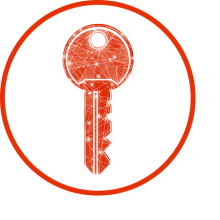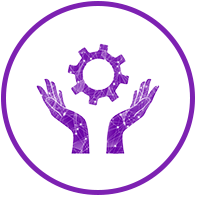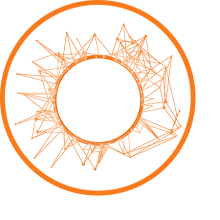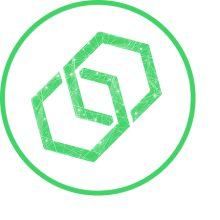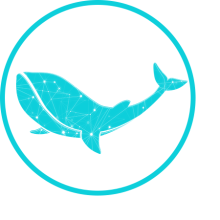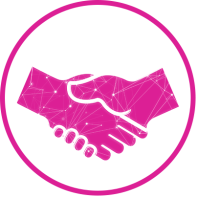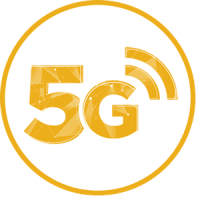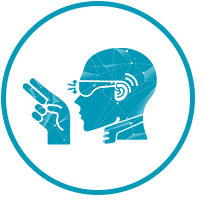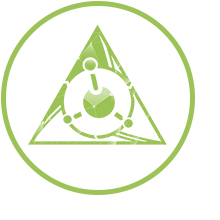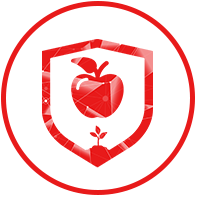The Convergence Accelerator program is composed of four cohorts. Each cohort focuses on convergence research track topics. The 2019, 2020, and 2021 cohorts are currently in phase 2. The 2022 cohort is currently in phase 1.
The Convergence Accelerator program model includes the Convergence Research phases 1 and 2. All teams within a cohort begin in Convergence Research Phase 1 – a proof-of-concept planning phase. At the end of phase 1, teams participate in a formal NSF pitch and proposal evaluation. Selected teams advance to phase 2. Phase 2 teams continue to apply program fundamentals to develop solution prototypes and to build a sustainability model. By the end of phase 2, teams are expected to provide deliverables that impact societal needs at scale and are sustainable beyond NSF support.
2019 cohort
Launched in September 2019, 43 phase 1 teams were awarded a total of $39 million to support projects focused on two research track topics: Open Knowledge Networks, Track A, and AI and the Future of Work, Track B.
In September 2020, the Convergence Accelerator awarded nine teams phase 2 awards, investing more than $28 million to address national-scale societal challenges and to generate knowledge to transition ideas from research into practice.
Vast amounts of data are produced every day, yet many organizations lack the accessibility to use these data to draw insights and make decisions. Knowledge networks, or repositories, that host the world's knowledge will help power the next wave of artificial intelligence exploration, driving innovations from scientific research to the commercial sector.
Knowledge networks and graphs provide a powerful approach for data discovery, integration and reuse. But they also require an investment in their creation and maintenance. Today, only the biggest technology companies have the resources to develop and exploit significant knowledge graphs and networks.
To enable data to be freely accessible, especially to government, academia, small business and nonprofit organizations, the Convergence Accelerator is funding the creation of nonproprietary infrastructure to build open knowledge networks, OKNs.
Using artificial intelligence and machine learning, Convergence Accelerator teams build infrastructure, tools and applications to identify and link data points, describe relationships and gather information at speed and scale — enabling data-driven insights.
Open knowledge networks connect people, events, places, environments, health and more, removing boundaries between these domains. They link data, its attributes, and relationships to other data — making that information accessible to decision-makers, analysts, researchers, and the public so they can answer questions they care about.
The Convergence Accelerator teams currently focus on urban flooding, judicial court records, biomedical health, geospatial information, and technology infrastructure for knowledge network creation and use.
The Open Knowledge Networks phase 2 projects include:
AI and machine learning infrastructure tools and applications
- OKN Infrastructure — Led by the University of Michigan, the team is building infrastructure for constructing novel OKNs and OKN-powered applications. This solution provides tools to make the creation and maintenance of high-quality datasets and apps more cost-effective and more widely accessible.
- KnowWhereGraph — Led by the University of California, Santa Barbara, KnowWhereGraph provides knowledge graph and geo-enrichment services for environmental intelligence applications. The solution enriches data with pre-integrated, custom-tailored knowledge about any locale of interest, reducing the time to find, combine and reuse data. The initial application areas focus on decision support related to food systems, supply chains and humanitarian aid but can easily be expanded to other application areas.
Domain-based open knowledge networks
- Biomedical Open Knowledge Network — Led by the University of California, San Francisco, the network connects millions of pieces of biomedical information, including molecules, pharmacological compounds, organs and diseases, food nutrients and more. Centered around knowledge representation and reasoning, the team develops applications using graph theory, advanced visualizations and real-world clinical evidence to advance drug development and precision medicine.
- SCALES — Led by Northwestern University, the SCALES open knowledge network is designed to be a public resource to help provide insights based on judicial court records. SCALES is creating tools to decode court records and transform the data into actionable information that aids various users, including legal scholars, journalists, policymakers, judiciary and citizens.
- Urban Flooding Open Knowledge Network — Led by the University of Cincinnati, the network addresses urban flooding impacts to assist decision-makers and urban planners in real-time response and long-term planning.
Integrating the knowledge networks
- Data2Knowledge Consortium — Knowledge graphs are rapidly emerging as key infrastructure to integrate the diverse information needed to solve complex societal challenges, from climate change and human health to capturing business value from the AI revolution. The Open Knowledge Network phase 2 teams are collaborating on track integration to create the Data2Knowledge Consortium and ensure that the outcome from the Convergence Accelerator Track is "greater than the sum of its parts." Composed initially of the current Open Knowledge Network phase 2 teams, the objective of the Data2Knowledge Consortium is to facilitate a thriving ecosystem for open knowledge graph development and use.
Open Knowledge Networks Track Manager: Jemin George, program director
The world’s technological advancements in AI, machine learning, and robotics are shifting the future of work in unanticipated ways. NSF’s Convergence Accelerator is focusing on solutions to train, reskill, upskill, and prepare the current and future workforce with industry needs and jobs of the future, as well as build a national talent ecosystem to stimulate the U.S. workforce and ensure continuing global competitiveness.
Teams composed of academia, industry, nonprofits, and end-user partners are converging together to develop disruptive future of work solutions that envision a positive national-sale societal impact. With these solutions, technology is utilized to create a STEM talent pipeline relevant to industry needs, keep workers safe and help them perform their jobs better, create new jobs, and facilitate accessibility and inclusivity. Solutions include developing the U.S talent pipeline through competency-based training intelligent tools to connect academic institutions with industry needs to prepare students for the workforce, improving workforce training and safety for emergency responders through human augmentation, and creating virtual reality and augmented reality (VR/AR) tools to identify unique skills of neurodiverse individuals thus preparing them to thrive in the workforce.
The Future of Work funded phase 2 projects include:
- LEARNER—Led by Texas A&M, is an agile and adaptive Human Augmentation Technologies (HAT) integrated Emergency Response (ER) training platform that accelerates HAT adoption for safer and more efficient ER work, supports adaptive learning sensitive to ER workers’ socio-technical opportunities and budgetary constraints, builds and retains skilled ER personnel, and accelerates next-gen workforce development.
- SkillSync— Industry 4.0 is changing the skills that workers need and companies require, leaving businesses vulnerable and colleges behind. SkillSync, led by Eduworks Corporation, uses AI and national skills data to help companies identify required skills, connect them with college continuing education departments, and enable colleges to respond with efficient, effective, and equitable reskilling programs.
Integrating the Future of Work Ecosystem
- STEP UP! – To guarantee the convergence research Future of Work track focus is greater than the “sum of its parts", phase 2 team solutions converge toward track integration, creating STEP UP the Skills-Based Talent Ecosystem Platform for Upskilling. Composed of the Future Work teams, STEP UP connects the skills and talents of individual workers to the opportunities that most need them. By inclusively engaging America’s human skill and talent, and the technologies that support, augment, and develop that talent, the group is ensuring every American may partake in the benefits of a thriving economy and the dignity of meaningful work.
AI & the Future of Work Track Manager: Linda K. Molnar, program director
2019 Cohort Project Videos
Track A: Open Knowledge Networks phase 2 videos
Biomedical Open Knowledge Network
KnowWhereGraph
OKN Infrastructure
SCALES
Urban Flooding Open Knowledge Network
Data2Knowledge Consortium
Track B: The Future of Work phase 2 videos
LEARNER
SkillSync
Skills-Based Talent Ecosystem Platform for Upskilling, STEP UP
2020 cohort
In September 2020, the Convergence Accelerator launched the 2020 cohort, awarding 29 teams phase 1 awards totaling $27 million. The 2020 cohort addresses two transformative research areas of national importance: Quantum Technology, Track C, and AI-Driven Innovation via Data Sharing and Model Sharing, Track D.
In September 2021, the Convergence Accelerator awarded 10 teams phase 2 awards totaling $50 million.
Improving the U.S. industrial base, maintaining an edge in emerging technology areas, creating jobs, and making significant progress to address economic and societal needs are all vital challenges to the nation. Teams within the NSF Convergence Accelerator's Quantum Technology track are developing quantum technologies — sensors, devices, hardware, interconnects, networks and simulations — to deploy in applications such as autonomous vehicles and health care. They are also creating innovative curricula by leveraging strong industry-university partnerships that are diverse and inclusive.
The Quantum Technology phase 2 projects include:
Quantum sensors
- Quantum Sensors — Led by the University of Arizona, the team is developing an entanglement-enhanced sensing architecture to benefit many domains, including secure inertial navigation, space and planetary terrestrial control, and health care monitoring.
- PEAQUE — Led by the University of Washington, the team is addressing quantum computing scalability by innovating a chip-scale, multi-beam optical control system that empowers cold-atom quantum computing with thousands of qubits.
Quantum networks and simulations
- QuaNeCQT — Led by the University of Maryland, the team is developing hardware to transform the internet into a quantum internet, which will be essential for connecting the anticipated rapid expansion of quantum computers.
Workforce and education
- QuSTEAM — Led by the Ohio State University, QuSTEAM is a transformational undergraduate curriculum aimed at addressing critical workforce needs in quantum information science and engineering.
Quantum Technology Track Manager: Pradeep Fulay, program director
AI research and development require access to high-quality datasets and environments and resources for testing and training. NSF’s Convergence Accelerator is funding the development of tools and platforms to address data and model-sharing challenges, including privacy protection and easy and efficient data matching and sharing.
The AI-Driven Innovation via Data and Model Sharing phase 2 projects include:
Civil/build infrastructure
-
AI-Grid — Led by Stony Brook University, AI-Grid is an AI-enabled solution for resilient networked microgrids.
Environment
- BurnPro3D — Led by the University of California, San Diego, BurnPro3D is a platform for public sector collaboration to reduce the risk of devastating megafires. Leveraging the WIFIRE Commons data sharing and AI framework, BurnPro3D uses next-generation fire science to prescribe burns for vegetation management at an unprecedented scale.
- Computing the Biome — Led by Vanderbilt University, the team is creating a data and AI platform for monitoring and predicting biothreats in a major U.S. city, and to drive economic sustainability by empowering businesses and advanced research organizations to deliver valuable consumer apps and breakthroughs.
- CRIPT — Led by the Massachusetts Institute of Technology, CRIPT is an AI-enabled cloud application and database that enables polymer scientists to easily find and interact with complex data.
- HydroGEN — Led by the University of Arizona, HydroGEN is a web-based machine learning platform that generates custom hydrologic scenarios on demand.
- Precision Epidemiology — Led by the University of California, Davis, the team is developing an online platform that converges data, AI models, and expertise across the livestock production and health space for the management of animal health.
AI-Driven Innovation via Data and Model Sharing Track Manager: Michael Pozmantier, program director
Track C: Quantum Technology, phase 2 project videos
PEAQUE
QuaNeCQT
Quantum Sensors
QuSTEAM
Track D: AI-Driven Innovation via Data and Model Sharing project videos
AI-Grid
BrunPro3D
Computing the Biome
CRIPT
HydroGEN
Precision Epidemiology
2021 cohort
In September 2021, the Convergence Accelerator launched the 2021 cohort, awarding 28 teams phase 1 awards totaling $21 million. The program’s third cohort is advancing solutions in two critical areas: the Networked Blue Economy, Track E, and Trust & Authenticity in Communication Systems, Track F.
In August 2022, the Convergence Accelerator awarded 12 teams phase 2 awards totaling $60 million.
Ocean-related industries and resources, known as the blue economy, play a central role in addressing challenges related to climate, sustainability, food, energy, pollution and the economy. This track focuses on interconnecting the blue economy and accelerating convergence across ocean sectors — creating a smart, integrated, connected and open ecosystem for ocean innovation, exploration and sustainable use. Collectively, funded research teams will produce tools, methods and educational resources that improve human engagement with the world's oceans as both an environment and a resource.
The Networked Blue Economy phase 2 projects include:
- Backyard Buoys: Led by the University of Washington, Backyard Buoys empowers Indigenous and other coastal communities to collect and use ocean data to support maritime activities, food security and coastal hazard protection.
- BlueGAP: Led by the University of South Florida, the BlueGAP project connects community organizations across watersheds to address economic and health challenges caused by nitrogen pollution. BlueGAP empowers people to reach well-informed decisions for better living through storytelling, reliable water quality information and tailored decision trees that link to next steps for action.
- Digital Reefs: Led by the Woods Hole Oceanographic Institute, Digital Reefs delivers interactive 4D visualizations of reef environments into the hands of local communities, helping to ensure a sustainable future for all coral reefs.
- Nereid Biomaterials: Led by the University of California, Santa Barbara, Nereid Biomaterials is enabling a healthier ocean through safe and rapid ocean degradation of plastic components of equipment. By merging marine microbiology, synthetic biology, materials science and robotics, the team is developing "ocean degradable" polymers with embedded additives to accelerate and control degradation.
- Ocean Vision AI: Led by the Monterey Bay Aquarium Research Institute, Ocean Vision AI accelerates the processing of underwater visual data with a globally integrated network of services, tools and diverse community of users. Ocean Vision AI streamlines access and analysis of ocean visual data to enable effective marine stewardship.
- ReCoast: Led by Tulane University, ReCoast is ensuring ecological safety and mitigation of land loss through coastal community recycling programs to keep glass out of landfills by creating glass sand products that support coastal restoration and preservation projects.
Networked Blue Economy Track Manager: Aurali Dade, program director
Modern life depends on access to communications systems that offer trustworthy and accurate information. Economic growth and opportunity depend on dynamic networks for innovation and transaction that connect American families, communities, and businesses to a range of goods and services. Yet, these systems face a common threat. Communication systems can be manipulated or can have unanticipated negative effects. The overarching goal of this track is to address the urgent need for tools and techniques that help our nation effectively prevent, mitigate and adapt to critical threats to communication systems.
The Trust & Authenticity in Communication Systems phase 2 projects include:
- ARTT: Led by Hacks/Hackers, this team assists online communities with building trust around controversial topics such as vaccine efficacy. Users receive helpful approaches to engage, navigate, and analyze information. The toolkit’s primary resource, ARTT Guide, provides expert-informed suggestions- for analyzing information and communicating with others to build trust.
- Co-Designing for Trust: Led by the University of Washington, this team builds community-oriented infrastructure that supports underserved communities to design, collaborate on, customize, and share digital literacy approaches. Developed by academic researchers, community organizations, libraries, journalists, and teachers, Co-Designing for Trust re-imagines literacy to provide the cognitive, social, and emotional skills necessary to respond to problematic information.
- Co-Insights: Led by Meedan, this team enables community, fact-checking, and academic organizations to collaborate and respond effectively to emerging misinformation narratives that stoke social conflict and distrust. Our easy-to-use, mobile-friendly tools allow community members to report problematic content and discover resources while cutting-edge machine learning analyzes content across the web to create valuable insights for community leaders and fact-checkers.
- Course Correct: Led by the University of Wisconsin-Madison, this team creates a a dynamic misinformation identification dashboard, empowers journalists to identify misinformation networks, correct misinformation within the affected networks, and test the effectiveness of corrections. Designed by mass communication, computer scientists, engineers, and social media experts, Course Correct rebuilds trust in civic institutions while helping journalists tame the misinformation tide.
- DART: Led by State University of New York Buffalo, this team helps older adults recognize threats so they can protect themselves. Developed by game designers, social media researchers and security experts, DART is unique in tailoring its curriculum and using gamification to make training accessible and engaging for older adults.
- Expert Voices Together: Led by George Washington University, this team is building a rapid-response system to assist journalists, scientists, and other experts whose work is being undermined by coordinated online harassment campaigns. Modeled on best practices in trauma-informed crisis intervention, the EVT platform provides a secure environment for experts to receive support from their professional communities.
Trust & Authenticity in Communication Systems Track Manager: Michael Pozmantier, program director
NSF invests $21 million to tackle 2 complex societal challenges: the networked blue economy, and trust and authenticity in communication systems, September 22, 2021
NSF's Convergence Accelerator invests $30 million to tackle challenges related to the blue economy, September 21, 2022
Track E: The Networked Blue Economy Project Videos
Backyard Buoys
BlueGAP
Digital Reefs
Nereid Biomaterials
Ocean Vision AI
ReCoast
Track F: Trust & Authenticity in Communication Systems
ARTT
Co-Designing for Trust
Co-Insights
Course Correct
DART
Expert Voices Together
2022 Cohort
In August 2022, the Convergence Accelerator launched its fourth cohort, the 2022 cohort, awarding 16 teams a total of $12 million to the Track G: Securely Operating Through 5G Infrastructure. Track G is in partnership with the Department of Defense Office of the Under Secretary of Defense for Research and Engineering, or DOD OUSD(R&E).
In December 2022, the program launched three additional convergence research tracks: Track H: Enhancing Opportunities for Persons with Disabilities, Track I: Sustainable Materials for Global Challenges, and Track J: Food & Nutrition Security with a more than $34 million investment. Each track awarded 16 phase 1 teams.
In September 2023, the program advanced 5 Track G teams from Phase 1 to Phase 2, totaling a $25 million investment.
5G wireless networks are crucial components of modern communication systems and have become essential to national security. The goal of this track is to seek enhancements to end devices and/or augmentations to 5G infrastructure to enable military, government, and critical infrastructure operators to have the capability to operate through public 5G networks, while meeting security and resilience requirements.
The Securely Operating Through 5G Infrastructure Phase 2 projects include:
- AVOID: Led by Johns Hopkins University, Automated Verification of Internet Data-paths or AVOID, secures 5G communications by restructuring communication paths to avoid adversary-controlled base stations, networks, and locations, ensuring that critical 5G communications remain invisible to even the most sophisticated adversaries.
- GHOST: Led by the University of Colorado, Boulder, the 5G Hidden Operations through Securing Traffic (GHOST) team proposes a solution to operate securely through untrusted 5G networks by securing user devices, preventing pattern-of-life analysis, impeding traffic analysis, and injecting false information.
- INDIGO: Led by AT&T Corporation, The Intelligent 5G Networks Designed and Integrated for Globalized Operations (INDIGO) project ensures secure, resilient, and quality 5G communications for warfighters and first responders by employing Human-Centered Artificial Intelligence, integrating several Zero Trust capabilities, and leveraging the Open Radio Access Network architecture. The Intelligent 5G Networks Designed and Integrated for Globalized Operations (INDIGO) project ensures secure, resilient, and quality 5G communications for warfighters and first responders by employing Human-Centered Artificial Intelligence, integrating several Zero Trust capabilities, and leveraging the Open Radio Access Network architecture.
- SE-RAN: Led by SRI International, the Security-Enhanced Radio Access Network (SE-RAN) project is developing a multi-layered sensor and enforcement platform for managing security services for Open Radio Access Network (O-RAN) compliant 5G+ mobile infrastructure.
- ZTX: Led by the University of Kansas, the Zero Trust X (ZTX) team proposes an end-to-end software solution, the Zero Trust Chain, designed to securely share situational awareness through 5G networks for military operations.
The Securely Operating Through 5G Infrastructure phase 1 projects include:
- 5G Hidden Operations through Securing Traffic, or GHOST, led by University of Colorado Boulder.
- 5G Traffic Sovereignty: Operating Through an Adversarial Internet, led by University of California San Diego.
- Autonomously Tunable Waveform-Agnostic Radio Adapter for Seamless and Secure Operation of DoD Devices Through Non-Cooperative 5G Networks, led by Florida International University.
- Building Resilient and Secure 5G Systems, or BRASS, led by Red Balloon Security.
- Combating Vulnerability and Unawareness in 5G Network Security: Signaling and Full-Stack Approach, led by University of Kansas.
- Feasible Cooperative Zero Trust Framework for 5G, led by Blackberry Corporation.
- Intelligent 5G Networks Designed and Integrated for Globalized Operations, or INDIGO, led by AT&T Corporation.
- Lightweight Scalable Secure 5G and Beyond Networks, led by Novowi.
- Security Services for the 5G Software-Defined Edge, led by SRI International.
- Programmable Zero-Trust Security, or PETS, for Operating Through 5G Infrastructure, led by Texas A&M Engineering Experiment Station.
- Privacy-preserving Intrusion-resilient Secure Multiparty-computation-based Overlay for Secure and Resilient Communication Through 5G, led by SRI International.
- Proactive End-to-End Zero Trust-Based Security Intelligence for Resilient Non-cooperative 5G Networks, led by University of Michigan.
- Secure Censor-resistant Overlay Resilient Networks, or SCORE, led by Peraton Labs.
- Secure Texting over Non-cooperative Networks and Anti-jamming Enhancement in 5G, led by George Mason University.
- Securely Operate through 5G Networks with Informed Control, or SONIC, led by the University of Utah.
- SMART-5G: Secure Multichannel Automated opeRations Through 5G Networks, led by IBM, Consulting Federal.
Securely Operating Through 5G InfrastructureTrack Manager: Jemin George, program director
According to the World Health Organization an estimated 1.3 billion or 1 in 6 people globally experience significant disability. Regardless of the type of disability, persons with disabilities or PWDs experience major barriers hindering their ability for achieving better economic opportunities, quality of life, health, and wellness. The goal of this track is to develop new technologies and tools to enhance quality of life and employment access and opportunities for PWDs. By serving as a platform the track will bring together a wide range of disciplines and sectors to develop use-inspired solutions.
Track H: Enhancing Opportunities for Persons with Disabilities phase 1 projects include:
- Advancement of Driving Technology for Vocational Enablement, led by Mississippi State University.
- AI-based Tools to Enhance Access and Opportunities for the Deaf, led by Rutgers University.
- Appropriate Rehabilitation Technology via Passive Tactile Stimulation, led by Stanford University.
- Automating Transportation Affordances for People Living with Disabilities Using a Machine Learning Approach, led by Utah State University.
- Bridging the Fragmentation of Information Access — An Integrated, Multimodal System for Inclusive Content Creation, Conversion, and Delivery, led by Saint Louis University.
- Convergent, Human-Centered Design for Making Voice-Activated AI Accessible and Fair to People Who Stutter, led by Michigan State University.
- Determining Community Needs for Accessibility Tools that Facilitate Programming Education and Workforce Readiness for Persons with Disabilities, led by the University of Southern California.
- Developing Experiential Accessible Framework for Partnerships and Opportunities in Data Science for the Deaf Community, led by Purdue University.
- Leveraging Human-Centered AI Microtransit to Ameliorate Spatiotemporal Mismatch Between Housing and Employment for Persons with Disabilities, led by Wayne State University.
- Making Virtual Reality Meetings Accessible to Knowledge Workers with Visual Impairments, led by Cornell University.
- Mobility Independence Through Accelerated Wheelchair Intelligence, led by Northwestern University.
- Next Generation Augmentative and Alternative Communication Technology Powered by Artificial Intelligence, led by the University of Arkansas.
- Rapid Fabrication of Custom-Fit Reshapable Prosthetic Devices with Electronic Skin Sensors, led by Rocky Tech, Ltd.
- Restoring Arm Function After Stroke, led by Harvard University.
- Smart Wearables for Expanding Workplace Access for People with Blindness and Low Vision, led by New York University Medical Center.
- Towards a Community-Driven Framework for the Creation and Impact Analysis of Digital Accessibility Maps with Persons with Disabilities, led by Wichita State University.
Enhancing Opportunities for Persons with Disabilities Track Manager: Pradeep Fulay, program director
The world is dependent on critical materials for every aspect of life and work. These materials are integral to energy, infrastructure, healthcare, economic development and national security. Approaches that consider a "circular economy" for materials are essential for the sustainable design of these materials and are intended to capture the full life cycle through their use in applications such as the built environment, semiconductors, polymers, and textiles. The goal of this track is to develop use-inspired solutions to advance fundamental materials science, including materials design and manufacturing processes; and circular design to create environmental and economically sustainable materials and products.
Track I: Sustainable Materials for Global Challenges phase 1 projects include:
- A Tale of Two Cities Optimizing Circularity from Molecules to the Built Environment, led by the University of Georgia Research Foundation, Inc.
- Accelerating Use of Geologically-driven Engineering and Reclamation, or AUGER – A Predictive Approach to a Sustainable Critical Minerals Industry, led by Cornell University.
- Building a Sustainable, Innovative Ecosystem for Microchip Manufacturing, led by Massachusetts Institute of Technology.
- Designing for Circular Economies – Creating Impact from Local Plastic Waste Using Off-Grid Containerized 3D Printers & Practice Based Learning, led by re:3D Inc., featuring Australian partners University of Wollongong and Western Sydney University.
- Economically Sustainable Polypropylene Recycled Plastics Enabled by Compatibilizer Additives, led by Black & Decker (U.S.) Inc.
- Energy-efficient MetaConductors for Convergence of Sustainable Electronics, or E-MC2 of Sustainable Electronics, led by the University of Florida.
- Enhanced Biobased Textiles and Composites Via Microbially Produced Silk Proteins, led Rensselaer Polytechnic Institute
- Mind Over Matter: Socioresilient Materials Design: A New Paradigm For Addressing Global Challenges in Sustainability, led by Massachusetts Institute of Technology.
- OpenMatFlo: A Platform for Designing, Producing, and Supplying Greener Inks for Additive Construction under Uncertainties, led by the University of Florida.
- PFASTIR: PFAS Toolkit for Innovating Replacements, led by IBM Corporation – Almaden Research Center.
- Revolutionizing the Manufacture of Portland Cement Concretes Towards a Circular and Carbon-negative Future, led by University of Alabama.
- Securing Critical Material Supply Chains by Enabling phOtovoltaic Circularity, or SOLAR, led by Battelle Memorial Institute.
- Sustainable Materials for Global Challenges: Recycled Textile and Apparel Manufacturing Ecosystems, or RETAME, led by the University of Delaware
- Sustainable Nature-based Nanomaterials for Remediation Solutions to Climate Change, led by the Research Foundation for The State University of New York, featuring Australian partner, the University of Queensland.
- Sustainable Recycling and Remanufacturing of Clean Energy Products from Electronic Waste, led by Ames National Laboratory.
- Sustainable Topological Energy Materials, or STEM, for Energy-efficient Applications, led by Massachusetts Institute of Technology.
- Toward Water Circularity: Mining Green Hydrogen and Value-Added Materials from Hypersaline Brines, led by Oregon State University.
Sustainable Materials for Global Challenges Track Manager: Linda K. Molnar, program director
By 2050, the world's population is anticipated to increase to an estimated 9.7 billion people, with a corresponding increase in food demands by 60%, water demands by 55% and energy needs by 80%, according to the United Nations Department of Economic and Social Affairs and NSF-funded workshop “Sustainable Systems Enabling Food Security in Extreme Environments and Food Deserts Employing a Convergence of Food, Energy, Water and Systems for Societal Impact Report”, led by The University of Texas at El Paso. The goal of this track is to accelerate convergence across food and nutrition sectors to combat challenges related to population health, climate change, and nutritional needs of vulnerable and disadvantaged communities.
Track J: Food & Nutrition Security phase 1 projects include:
- Accelerating commercial marine fish production in US: developing sustainable feeds, establishing feed suppliers and enhancing market acceptance, led by University of North Carolina at Wilmington.
- Aqua Sacs for Sustainable Agriculture in a Changing Climate, led by Pratt Institute.
- Artificial-Intelligence-Based Decision Support for Equitable Food and Nutrition Security in the Houston Area, led by University of Houston.
- Building a digital twin for national-scale field-level crop monitoring, prediction, and decision Support, led by George Mason University.
- Convergence Towards a Disaster Resilient Food System, led by University of Maryland, Baltimore County.
- Dairy Protein Product Research and Innovation Hub, led by Boise State University.
- Data-driven Agriculture to Bridge Small Farms to Regional Food Supply Chains, led by University of Arkansas.
- Food EducatioN for Nutritional security and Empowerment in Local communities, or FENNEL, led by University of Arkansas at Pine Bluff.
- Food, Land, Water Environmental OpenSource Risk Intelligence Synthesis Model, or FLOWER-ISM, led by Mesur.io
- Increased Take-Up of Food Benefits and Consumption of Locally-Sourced Nutrient Dense Food among Vulnerable Populations, led by University of California, Los Angeles.
- MidAtlantic Food Resiliency Network: Securing the Future of Food through a Multi-Mindset Approach, led by University of Maryland, College Park.
- Network Of User-engaged Researchers building Interdisciplinary Scientific infrastructures for Healthy food, or NOURISH, led by University of California, San Francisco.
- Optimizing sustainable delivery of local fresh produce in Puerto Rico to mitigate nutrition insecurity, led by George Washington University.
- Precision Agriculture for a Resilient Vegetable Supply Amidst Climate Change, or Precision Ag4Veggie, led by Virginia Tech Applied Research Corporation.
- Predicting the effect of climate extremes on the food system to improve resilience of global and local food security, led by University of California, Santa Barbara.
- Rapid detection technologies and decision-support systems to mitigate food supply chain threats, led by University of Missouri.
Food & Nutrition Security Track Manager: Michael Reksulak, program director
NSF, DOD partner to advance 5G technologies and communications for U.S. military, government and critical infrastructure operators, September 7, 2022
NSF accelerates use-inspired solutions for persons with disabilities, December 9, 2022
NSF spurs use-inspired research and technology development to address food and nutrition security challenges, December 13, 2022
NSF advances sustainable materials solutions and capabilities, December 19, 2022
NSF invests $25M to advance technologies and communications to operate securely through 5G networks, September 21, 2023



